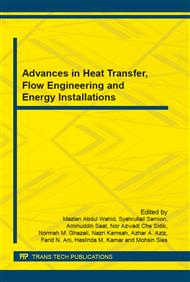p.101
p.107
p.111
p.117
p.122
p.127
p.132
p.142
p.147
Simulation of Heat Flux Effect in Straight Heat Pipe as Passive Residual Heat Removal System in Light Water Reactor Using RELAP5 Mod 3.2
Abstract:
Heat pipe is considered being used as a passive system to remove residual heat that generated from reactor core when incident occur or from spent fuel pool. The present research is aimed to studying the characteristics of straight heat pipe as passive residual heat removal system. As an initial step, a numerical simulation was conducted to simulate the best experimental design set up being prepared for the next step of the research. The objective is to get the thermal hydraulic characteristic due to variation of heat flux of heat source. The thermal hydraulic RELAP5 MOD 3.2 code is used to simulate and analyze the straight heat pipe characteristics. Variations of heat flux are 1567 Watt/m2, 3134 Watt/m2, 4701 Watt/m2, 6269 Watt/m2, and 7837 Watt/m2. Water as working fluid is heated on evaporation section with filling ratio 60%. Environmental air with variation 5 m/s and 10 m/s of velocity are used as external cooler. Straight heat pipe used in the simulation is wickless with 0.1 m of diameter and 6 m of length. The results show that higher heat flux given to the evaporator section will lead to more rapid heat transfer and achievement of steady state condition. The increasing of heat flux leads to an increase of evaporation of the working fluid and of pressure built in the heat pipe affecting higher saturation temperature of working fluid. Heat flux loading must consider the velocity of air as heat removal in the condenser to prevent dry out phenomenon in the evaporator. Based on the results, given the experimental set-up, the optimum range of experimental parameters could be determined.
Info:
Periodical:
Pages:
122-126
Citation:
Online since:
January 2016
Authors:
Keywords:
Price:
Сopyright:
© 2016 Trans Tech Publications Ltd. All Rights Reserved
Share:
Citation:


